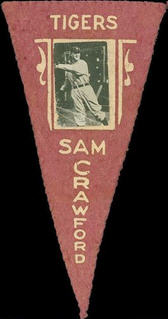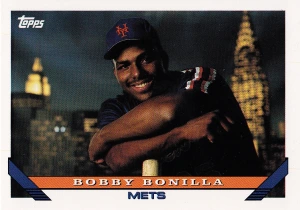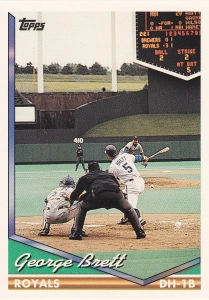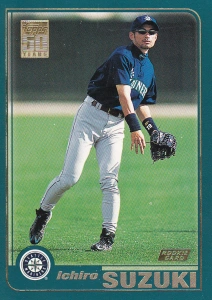Two years ago I did a post for my “set of the year” in response to a blog bat around by This Card is Cool.
A couple of things to think about. There are over 50 baseball products out this year if you count all the MLB-licensed things that Topps did, plus products from Leaf, Panini and Upper Deck. If you go by order of release date, here’s what came out in 2014. Bold means it’s a new product in 2014.
Baseball “standard issue” sets (it’s a bit of a stretch for me to include Goodwin and Golden Age in here – but I’ve included them every year I’ve done this):
- Topps (Series 1) – January 29
- Topps Turkey Red – February 19
- Topps Tribute – February 21
- Donruss (Series 1) – February 26
- Topps Heritage – March 14
- Topps Opening Day – March 19
- Topps Museum Collection – March 28
- Topps Gypsy Queen – April 9
- Bowman – April 30
- Panini Prizm – May 21
- Topps Archives – May 28
- Topps Tier 1 – June 6
- Topps (Series 2) – June 11
- Bowman Inception – June 27
- Panini Golden Age – July 2
- Upper Deck Goodwin Champions – July 2
- Topps Allen & Ginter – July 9
- Bowman Platinum – July 30
- Topps Mini – July 30
- Donruss (Series 2) – August 5
- Topps Finest – August 13
- Topps Chrome – August 27
- Topps Triple Threads – September 10
- Panini Immaculate – September 21
- Bowman Chrome – September 24
- Stadium Club – October 1
- Panini Hall of Fame 75th – October 8 (used to be Panini Cooperstown)
- Topps (Update) – October 15
- Topps Supreme – October 29 (no longer Asian market exclusive)
- Topps Heritage (High Numbers) – October 31
- Panini Classics – November 5
- Topps High Tek – November
- Donruss (The Rookies Update) – November 19
- Topps Dynasty – November 21
- Topps Five Star – December 5
- Bowman Sterling – December 19
Minor league / Draft card sets:
- Topps Pro Debut – June 4
- Topps Heritage Minor League – September 19
- Leaf Perfect Game Showcase – October 10
- Leaf Metal Draft – October 17
- Panini Prizm Perennial Draft Picks – November 12
- Leaf Valiant – November 21
- Bowman Draft – December 3
- Leaf Trinity – December
- Panini Elite Extra Edition – January 9, 2015
“odd-ball” sets:
- Leaf Legends of the Diamond – January 31
- Topps Stickers – March 13
- Famous Fabrics Big Apple – March 28
- Topps Team Sets – April
- Leaf Cal Ripken Ironman Signature – October 10
Most of the sets that “went away” this year were from Panini. The company didn’t bring back Triple Play, Hometown Heroes, Pinnacle, Select and America’s Pastime. Topps didn’t do the Tribute World Baseball Classic set this year – since there wasn’t a World Baseball Classic.
Ever since Panini entered into the fray in late 2012, there are even more card sets than there were in 2011 and 2012. Topps had a few more sets this year, too. That’s not necessarily a good thing – the market for baseball cards has felt over saturated for 15+ years at this point.
I collected less sets this year. Mostly because the summer was kind of lost time as far as baseball cards go. Out of the sets above, I collected base Topps (both series and Update), Topps Heritage (including High Numbers), Goodwin Champions, Turkey Red and Topps Archives. I didn’t collect Gypsy Queen or Panini Golden Age this year. I plan to focus almost exclusively on my Topps project in 2015, so I may cut out Archives next year.
OK – so what was my favorite set of the year? In 2011, it was Topps Heritage. In 2012, it was – again – Topps Heritage. In 2013, it was Topps flagship. I thought 2013 was a pretty weak baseball card year.
This year? I thought about Topps Heritage. 1965 was a great design, and Heritage was still fun to collect. But I don’t like some of the things that Topps did with the product this year. First and foremost, I was looking forward to the reproduction of the Embossed cards from 1965. Well, Topps screwed that up by making them ultra-rare. Additionally, they’ve subtly taken away some of the parallels between the current Heritage set and the original Topps set. Far fewer card numbers match up with the old set (i.e. – Hank Aaron and Jason Heyward having the same card number). The Real One autographs used to be only current players and reprints of the original set. Now they’re throwing guys like Paul O’Neill or Jim Rice into the set.
I thought this year’s Topps set had an interesting design. It wasn’t better or worse than last year, but I did think the photographs were better in 2013. I also didn’t like the inserts as much this year. So Topps didn’t win.
I’m going with a set that I didn’t actually collect. Topps did bring back one product that I would love to collect if I had the chance. I may think about buying a box or 2 next year. Stadium Club was a really cool product back when it first came out in 1991 – it kind of hit home with the things I like the best about cards; having cool photos is key to the set. This year, Topps brought Stadium Club back, and they made it a relatively affordable product (unlike the high-end attempt in 2008).
Of course, it doesn’t hurt that they put my favorite player on the box.

But, much more importantly, the focus was again on the photos. Whether your seeing great action photos…

Interesting posed shots…
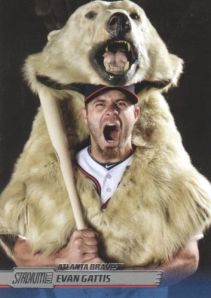
Or NEW pictures of retired players.
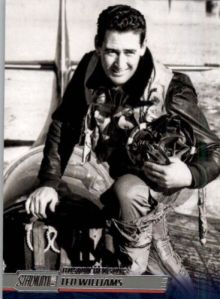
I can’t stress the last point enough! Over the past 3 years, Topps has re-used photos to a ridiculous degree. It’s frustrating when you pull a card from one product and realize it’s the same picture you saw from a set you bought a month earlier. To see new pictures of Lou Gehrig, Babe Ruth or Williams is refreshing.
The rest of the product is solid as well. Sure, it has too many parallel sets, but that ship sailed for every set long ago. There are nice on-card autographs, and the inserts bring back some great ideas from older years. The three card Triumvirate came back with a honeycomb background.

Beam Team is back, too.

There is a die-cut set of legends and future stars that looks really nice.

There is also a set called field access that shows players down on the field before the game. This card was pretty cool – it’s clearly the same photo shoot as the 1991 Topps card of Clemens.

The bottom line, though – is the base set. It’s a winner!





























